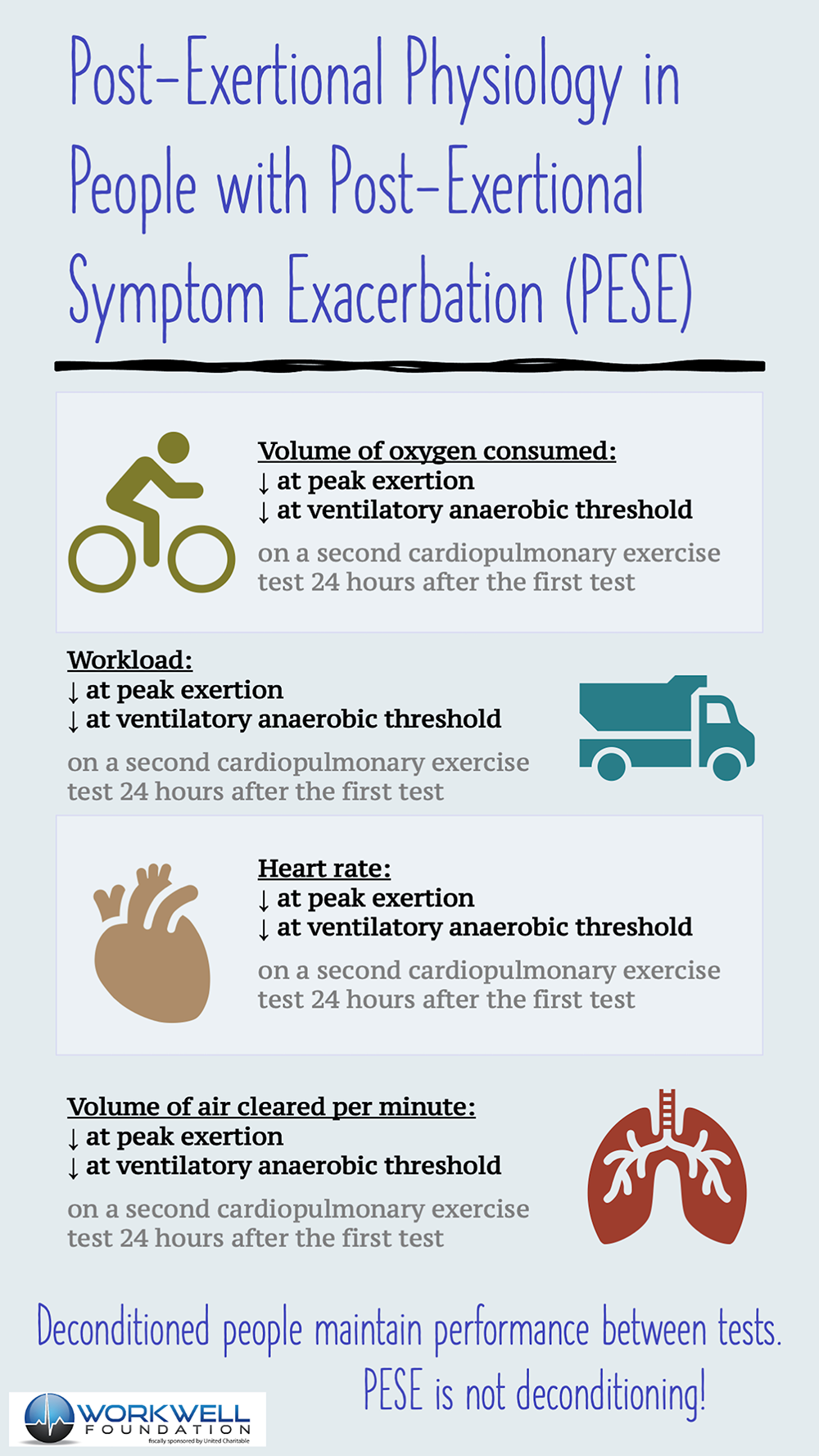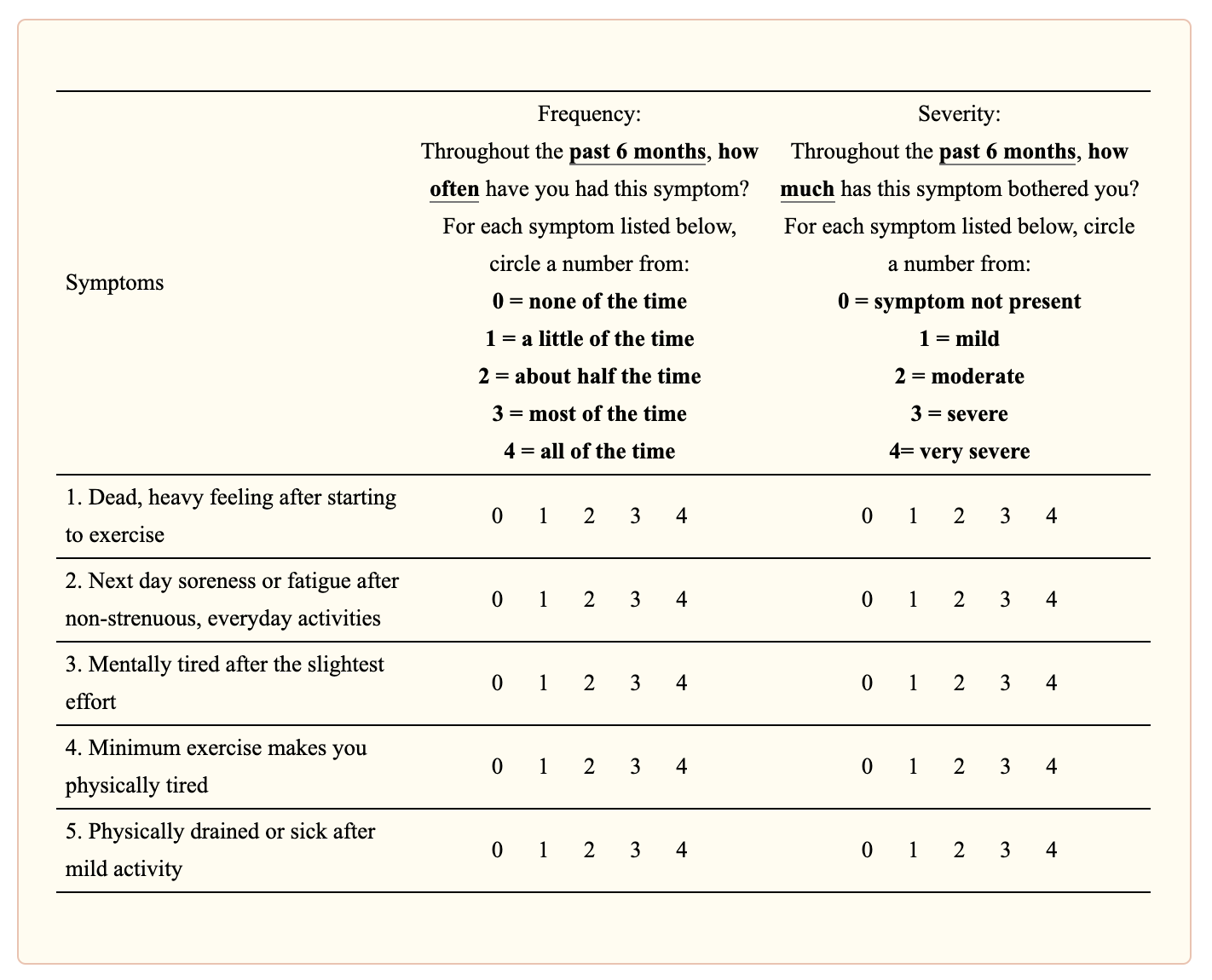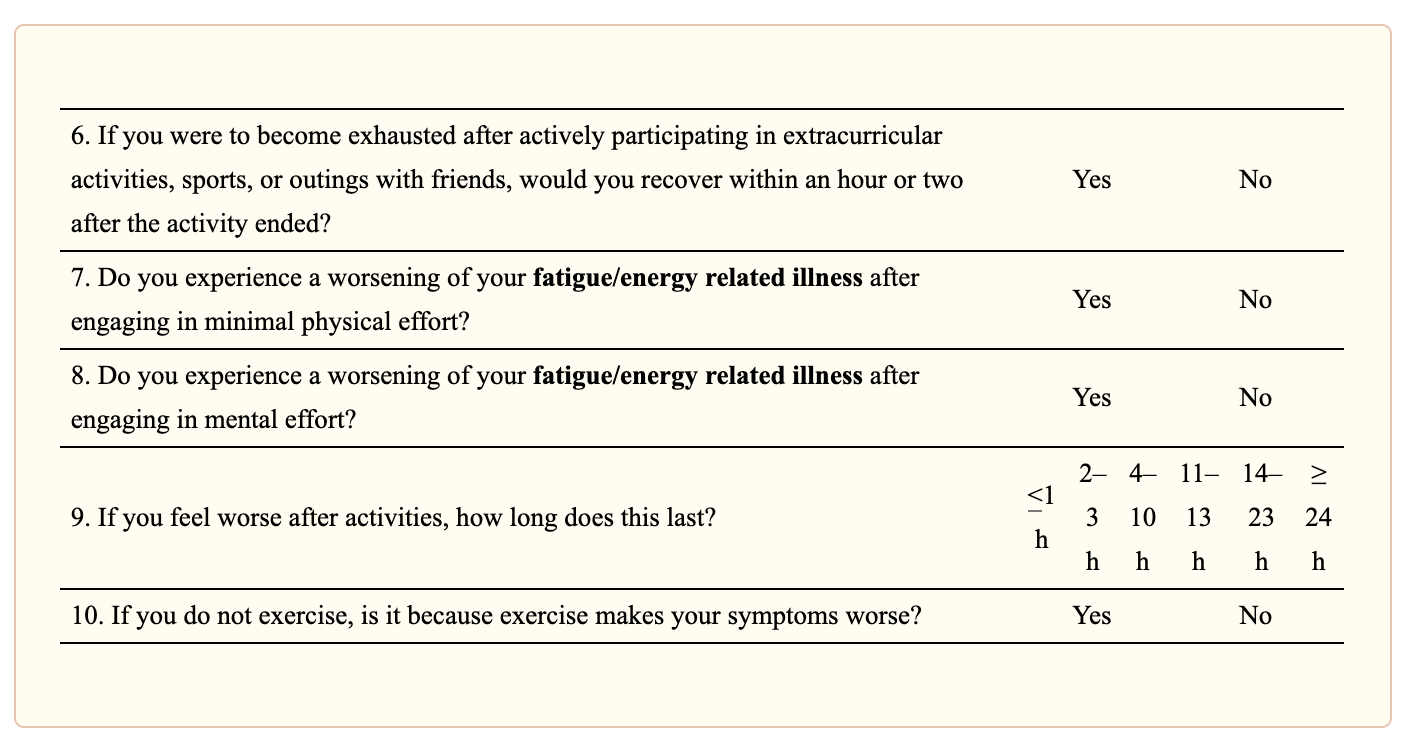Post-Exertional Symptom Exacerbation (PESE)
This episode is from the Long COVID Video Series. Please visit the website to access audio and written versions and translations.
When symptoms such as disabling fatigue or exhaustion, difficulty thinking, pain, exercise intolerance, and other symptoms are made worse by exertion, this is called post-exertional symptom exacerbation. Post-exertional symptom exacerbation (PESE) may also be called post-exertional malaise (PEM) or post-exertional neuroimmune exhaustion (PENE).
Post-exertional symptom exacerbation can be triggered by physical, cognitive, mental, social or emotional exertions, and varies among different people. The worsening of symptoms by exertion can happen immediately, or can happen 24-72 hours after exertion. This can make it difficult to predict or manage. It can take days, weeks or even months to recover from post-exertional symptom exacerbation. The exhaustion caused by exertion can be very disabling, as it can affect different symptoms or parts of the body. Post-exertional symptom exacerbation is a feature of the inability to produce sufficient energy on demand and is characteristic among those with Myalgic Encephalomyelitis / Chronic Fatigue Syndrome (ME/CFS).
Post-exertional symptom exacerbation can be triggered by different things, such as usual activities in daily life, changes to sound and light, or activities that could previously be tolerated. It is not the same as “Boom and Bust” cycles of overactivity, because often post-exertional symptom exacerbation is not triggered by overactivity. Showering, getting dressed, walking, loud noises, busy environments, or multi-tasking is not overactivity. Saying post-exertional symptom exacerbation is like a “Boom and Bust” cycle, is patient blaming and unhelpful, and this assumption may be based on ableism.
ME/CFS South Australia Inc provides a comprehensive description of what is post-exertional malaise, assessment, and management. Dialogues ME/CFS provides accessible videos on post-exertion malaise.
Bateman Horne Centre provides a 7-part video series on post-exertional malaise, available below:
ME Action and Patient-Led Research Collaborative provide a pacing and management guide that explains post-exertional symptom exacerbation to help better understand the common features and science.
The World Health Organization Long COVID rehabilitation guidelines include Post Exertional Symptoms Exacerbation definition and recommendations on assessment and management.
Post-exertional malaise is a cardinal symptom of ME/CFS within international consensus criteria. It has wide diversity in presentation and attempts have been made to characterise post-exertional malaise. The ME Association provides a summary review of post-exertional malaise. The Workwell Foundation describes the immediate, short-term and long-term time course of post-exertional malaise in a factsheet. Below is a 3 minute video about post-exertion malaise and ME.
Some people living with Long COVID report post-exertional symptom exacerbation, and lessons can be shared in different and additional directions between Long COVID and ME/CFS. Tools are available to assess post-exertional malaise, such as the DePaul Symptom Questionnaire, available in original, adapted, brief (short-form), paediatric, and paediatric screener versions. The short-form version is available here.
There is no one-size-fits-all approach to managing PESE. Identification of the top three symptoms, how much activity is necessary to provoke PESE, how long symptoms of PESE last, and how they change over time are critical to inform approaches to PESE management. The Centres for Disease Control and Prevention (CDC) provides a guide to managing PESE.
Research using cardiopulmonary exercise testing and muscle biopsies to explore the pathophysiology of post-exertional symptom exacerbation in people living with Long COVID, has shown muscle abnormalities that worsen after post-exertional symptom exacerbation. These muscle abnormalities are associated with lower exercise capacity, local and systemic metabolic disturbance (including lower mitochondrial function), severe exercise-induced myopathy and tissue infiltration of amyloid-containing deposits in skeletal muscles of people with Long COVID which worsens after inducing post-exertional symptom exacerbation. These abnormalities are not reflective of physical inactivity, and physical inactivity itself does not cause post-exertional symptom exacerbation.
Exercise intolerance observed in Long COVID is not physical deconditioning and clearly PESE is not deconditioning, because evidence from systems-level physiology indicates important differences in physiological responses to acute exercise between people with deconditioning compared to people with PESE. It is unacceptable to be simplistic when attempting to unravel the post-COVID-19 syndrome exercise intolerance mechanisms.
The video below by Broken Battery, outlines the abnormal response to exertion, triggers, symptoms and management of post exertional symptoms exacerbation.
A brief questionnaire, which includes questions from the DePaul Symptom Questionnaire, may be useful to screen for post-exertional symptom exacerbation among people living with Long COVID. The first step (images below) includes 5 questions to assess the frequency and severity of post-exertional malaise over the past 6 months. The second step (images below) includes 5 questions to examine duration of symptom exacerbation after activity, recovery time, and role of exercise in symptom exacerbation.
The new DePaul Post-Exertional Malaise Questionnaire is also available to assess key characteristics, triggers, onset, duration, and effects of pacing. Access this tool here.
Part 1
To assess frequency and severity of PEM
(click picture to access)
Picture posted with permission from Prof L.Jason
To learn more in depth about post-exertional symptom exacerbation, this video by Workwell Foundation and Action CIND provides information about identifying, understanding and preventing post-exertional malaise.
World Physiotherapy provided a range of useful resources to support Long COVID rehabilitation for #WorldPTDay 20201, available in nearly 60 different languages in their toolkit. This includes an activity diary and information sheets on Fatigue and Post-Exertional Symptom Exacerbation and How to use pacing with your Physiotherapist.
To assess duration of PEM, recovery time, and role of exercise
(click picture to access)
Picture posted with permission from Prof L.Jason
Part 2
Pacing and heart rate monitoring can be effective strategies to manage post-exertional symptom exacerbation. The United States Centers for Disease Control and Prevention (CDC) provides information in managing Post-Exertional Malaise. Provincial Health Services Authority Canada provide COVID-19 specific resources on managing post-exertional symptom exacerbation in English, Punjabi, Tagalog and Traditional Chinese.
Date Last Revised: 28th January 2024





